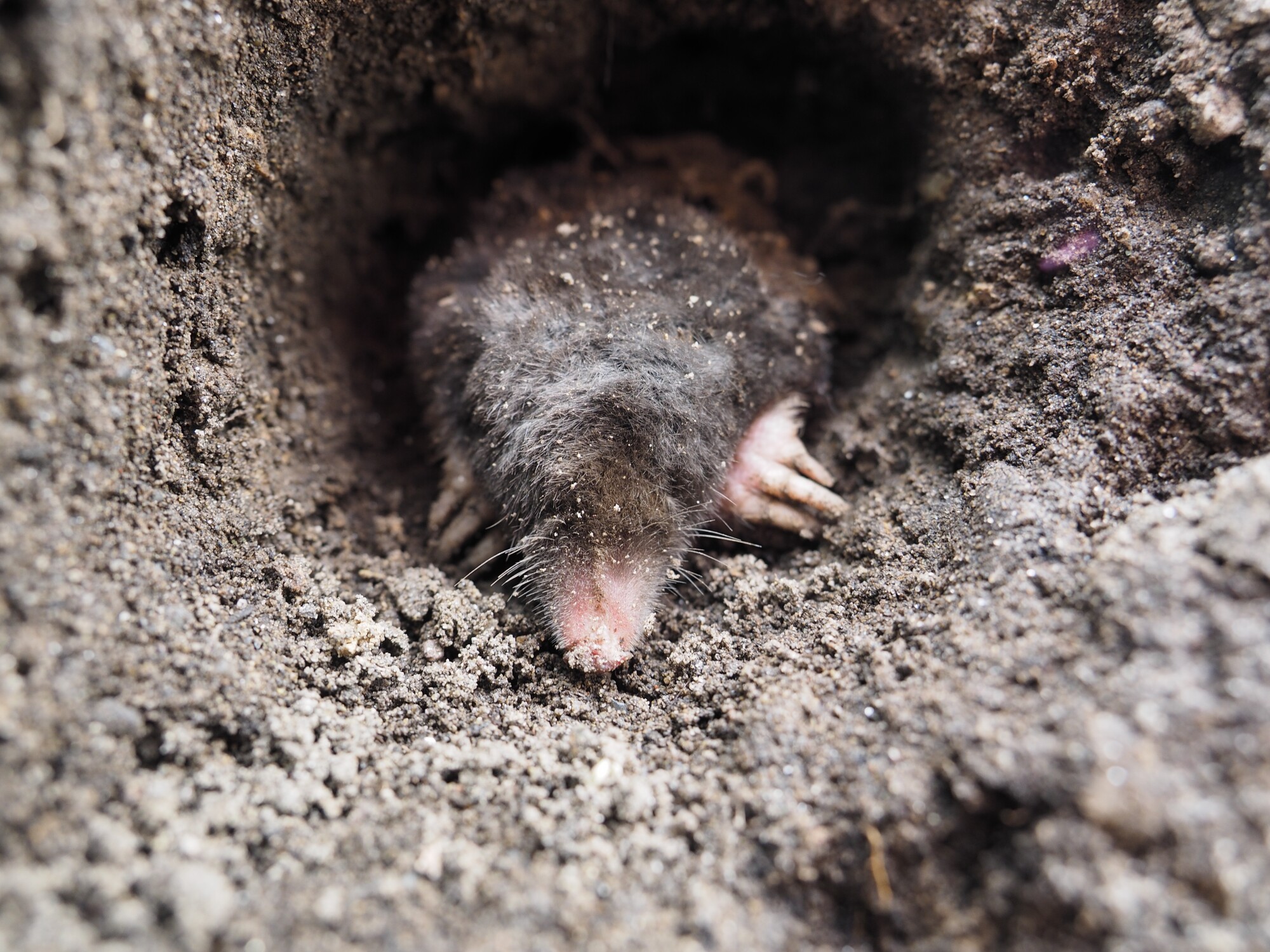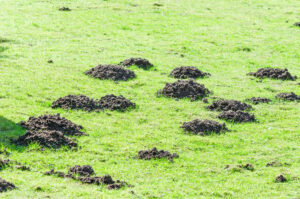
Coming out to see your manicured lawn raised with surface tunnels or sporting a new molehill can be frustrating. Before you can fix the damage, you first have to take care of the problem. Getting rid of ground moles is easier said than done.
Moles build underground tunnel systems and rarely come out into the daylight. It’s difficult to tell how many you have, and how big their tunnel system is. If you see signs of a mole, chances are there will be more rodents coming.
When ground mole problems threaten to take over your yard, it’s best to call in the professionals, and here are seven reasons why.
1. They Can Damage or Kill Your Yard
One of the first signs that you may need ground mole removal help is when surface tunnels, looking like veins, or dirt mounds show up around your yard. While they are vegetarians and don’t eat roots or grass, their daily movement and creating of burrows can kill your yard, ruin your garden and even affect bushes or trees.
Moles will dig around the roots of trees and bushes trying to get to insects and larvae. If it finds a good food source, it will dig more tunnels around the roots. This can cause soil erosion and lead to a lack of water getting to your vegetation.
If you notice a previously healthy tree or bush beginning to die, check around the root system. Moles prefer to dig in loose and wet soil, so newly planted trees or bushes are at risk if you have signs of moles.
2. Other Rodents Like Mole Tunnels
Animals such as mice, voles, chipmunks, and shrews will all use mole tunnels for travel and potentially move into abandoned mole burrows. Getting rid of the moles before they can create an extensive network under your yard will help to keep other rodents away.
Voles will gnaw at tree roots and bark, causing damage to your yard. They will also eat vegetables, flowers, and grass. Voles live in colonies and can breed many times in a year, creating more young.
Mice will use the mole tunnels to gain closer access to food, outside or in. They can squeeze through small openings and are excellent climbers. They will eat almost anything and create nests in piles of leaves, hay, or thick gardens.
Like moles, other rodents will bite and carry the risk of disease.
3. Moles Are Difficult to Poison
Moles eat insects, grubs, and earthworms. They hunt through sound so they only eat live food. Most do-it-yourself mole poison kits are in the form of peanuts, fake worms, and seeds.
Even though the poison is lethal and would kill a mole, the chances of them ingesting the poison are almost non-existent.
Dealing with the aftermath of a poisoned rodent is also difficult. They often crawl back into their tunnels or burrows when they die. It takes days and even weeks for their carcasses to decompose, leading to a bad smell, flies, and other unsavory side effects.
Due to the difficulty of poisoning them, ground mole trapping is a good option for you.
4. Humane Removal
While you can try to use ground mole traps yourself, made for home traps can harm or kill the animal, especially if you are unsure how to use them.
They might be a pest to your yard, but moles are beneficial in their natural habitats. They keep the insect population under control and with their digging and tunneling, they provide homes to other animals.
Their digging also acts as a natural aerator to the soil which can help areas with vegetation growth and pull nutrients deeper into the ground.
Humane trapping used by professional mole trappers ensures that the mole is released into a different area. They will also know if the mole is a nesting mother and will make sure they capture all the young.
5. Mole Trapping Is Time Consuming
The process of trapping moles takes time and the process needs monitoring. It could take weeks or even months to get all the pests from your yard.
Boundaries for the mole tunnels need to be established as well as prevention methods to keep other moles or rodents from entering established tunnels. Removing molehills and filling in the tunnels is also important to maintaining your yard.
Professional mole trappers have the training to find tunnels, burrows, and entry points. They have the proper equipment for catching the moles and know where to release them.
6. Getting Rid Of Ground Moles Can Be Expensive
While mole poisons, traps, and other do-it-yourself methods are available, if you don’t succeed the first time, or you end up dealing with more than one mole, you may find yourself spending more money than you planned.
Working with a ground mole removal company can help your pocketbook in multiple ways.
- They will give you a free consult and an estimate
- Many offer packages or monthly services
- They have a guarantee of service to get rid of your problem
- May offer other services if you have more than just a mole problem
Not only will you save money and energy on removing your pests, but you can also learn how to prevent another infestation in the future.
7. Untreated Infestations Can Damage Your House
If you leave a mole problem untreated or fail to get all the rodents, you could be looking at more than just a damaged yard. They can also cause damage to the foundation of your house.
If a mole digs tunnels under and around your home, water can pool inside these tunnels. The water freezes and melts which may lead to cracks in the foundation.
The cost to fix a home foundation is much higher than making sure the problem is taken care of initially.
Don’t Let Your Molehill Become a Mountain
At the first sign of mole trouble, make sure you contact a professional.
If you need help getting rid of ground moles or other nuisance animals, give us a call. After a conversation with a reliable mole trapper and an onsite visit, you’ll receive a personalized quote and options for making your problem disappear.







No comment yet, add your voice below!